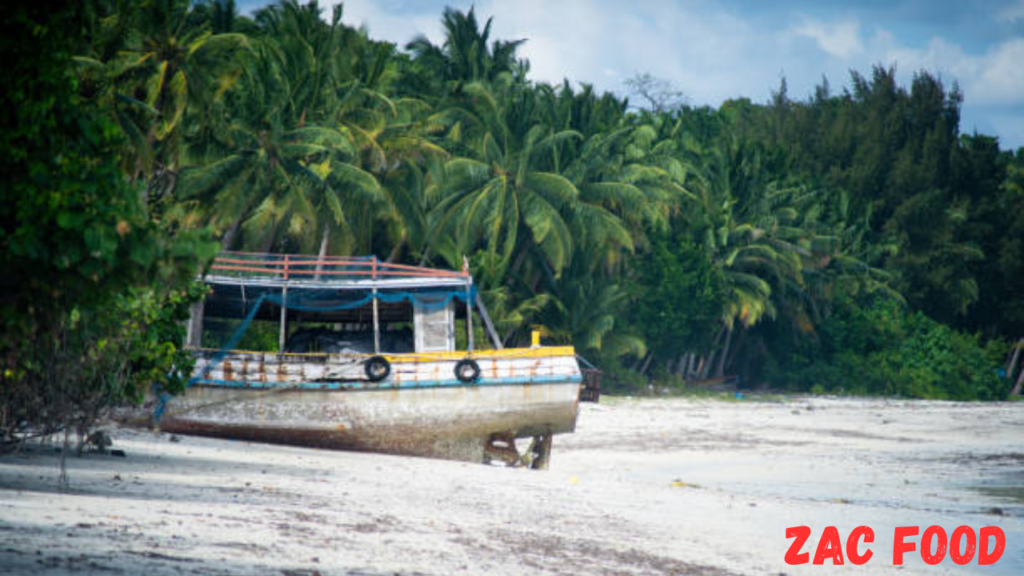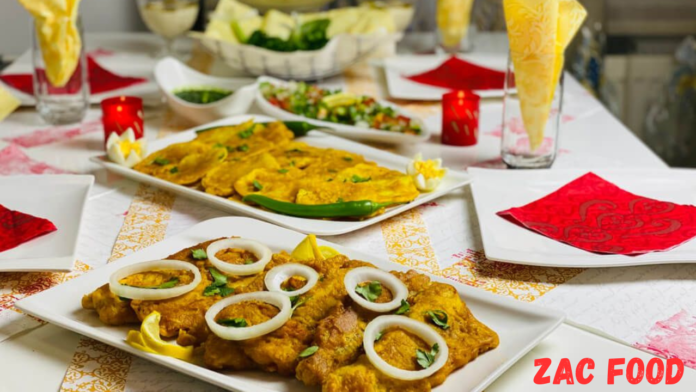Lakshadweep, an archipelago of 36 mesmerizing islands in the Arabian Sea, is often celebrated for its pristine beaches, vibrant coral reefs, and crystal-clear waters. However, beyond the stunning natural beauty lies a rich and diverse tapestry of Lakshadweep food and culture that offers an equally compelling reason to explore this island paradise.
Geographical and Cultural Background of Lakshadweep
Lakshadweep, meaning “a hundred thousand islands” in Sanskrit, is a remote union territory of India. Its location, about 200 to 400 km off the southwestern coast of India, has kept it relatively isolated, allowing it to develop a unique culture influenced by South Indian, Arabian, and Maldivian traditions. The ocean plays a pivotal role in shaping the way of life here, influencing everything from local customs to the culinary traditions that are deeply intertwined with the sea.

The Essence of Lakshadweep’s Culture
Lakshadweep’s culture is deeply rooted in its Islamic heritage, with nearly the entire population adhering to Islam. This religious influence is evident in the local customs, festivals, music, and dance forms. The community life on the islands is marked by strong social bonds, where traditions and practices are passed down through generations, ensuring that the essence of Lakshadweep food and culture remains intact.
Festivals and Celebrations: Religious festivals like Eid are celebrated with great fervor, bringing together the community in a spirit of joy and togetherness. These occasions are marked by special prayers, traditional music, and feasts that showcase the rich culinary heritage of the islands.
Music and Dance: Traditional music and dance forms, such as Kolkali and Parichakali, are integral to Lakshadweep’s cultural expression. Kolkali involves rhythmic stick dances, while Parichakali is inspired by martial arts, both reflecting the islanders’ love for storytelling through movement and rhythm.
Traditional Lakshadweep Cuisine
Lakshadweep’s cuisine is a delightful blend of flavors influenced by South Indian, Maldivian, and Arabic culinary traditions. The cuisine is characterized by its simplicity and reliance on the freshest ingredients available, primarily coconut and seafood. These elements are central to Lakshadweep food and culture, shaping the unique culinary identity of the islands.
Staple Ingredients in Lakshadweep Cuisine
Coconut: Coconut is the cornerstone of Lakshadweep cuisine, used in various forms—grated, milk, or oil—in almost every dish. It adds a rich, creamy texture and a hint of sweetness that balances the spiciness of the food.
Seafood: Given the islands’ location in the Arabian Sea, seafood is abundant and forms the basis of most meals. Tuna, mackerel, and prawns are particularly popular, prepared in a variety of ways, from curries to fries.
Rice: Rice is the staple grain in Lakshadweep, often served with curries and fried seafood. It complements the richness of the dishes and is a vital component of daily meals.
Spices and Herbs: The use of spices is moderate but essential, with ingredients like chili, turmeric, and curry leaves adding depth to the flavors without overwhelming the palate.
Popular Dishes of Lakshadweep
The culinary traditions of Lakshadweep are best experienced through its signature dishes, which offer a taste of the islands’ rich heritage.
Tuna Dishes:
- Mas Huni: A popular breakfast dish, Mas Huni is a simple yet flavorful mix of shredded tuna, grated coconut, onions, and chili. It’s usually served with flatbread and reflects the simplicity and freshness of Lakshadweep food and culture.
- Tuna Curry: This dish is a staple in Lakshadweep homes, featuring tuna cooked in a spicy, coconut-based curry. The combination of tender fish and rich, creamy coconut makes it a must-try.
Coconut-based Dishes:
- Coconut Rice: A fragrant dish where rice is cooked with coconut milk and garnished with grated coconut, offering a mild and aromatic accompaniment to spicy curries.
- Coconut Fish Curry: This dish epitomizes the fusion of coconut and seafood, with fish simmered in a rich coconut gravy, spiced with turmeric, chili, and curry leaves.
Vegetarian Delights:
- Breadfruit Curry: Breadfruit, a staple vegetarian option, is cooked in a flavorful curry that highlights the adaptability of Lakshadweep cuisine to local produce.
- Tapioca and Coconut Fry: This dish combines the starchy goodness of tapioca with the richness of coconut, making it a perfect side dish or snack.
Snacks and Sweets:
- Pathiri: A traditional rice-based flatbread, Pathiri is often served with curries and is an integral part of meals during special occasions.
- Kaivees: These sweet treats, made from coconut and jaggery, offer a delightful end to a meal and reflect the islanders’ love for coconut-based desserts.
Lakshadweep’s Seafood Heritage
Fishing is not just an economic activity in Lakshadweep; it’s a way of life. The islands’ economy is heavily dependent on fishing, with traditional methods like pole and line fishing being common. These sustainable practices ensure the conservation of marine resources, allowing the community to thrive without depleting the ocean’s bounty. Seafood is central to Lakshadweep food and culture, featuring prominently in both everyday meals and festive feasts.
The Role of Coconut in Lakshadweep’s Culture
Coconut is not just a key ingredient in Lakshadweep cuisine; it holds cultural and religious significance as well. The coconut tree, often referred to as the “tree of life,” is used in various aspects of daily life, from building materials to religious rituals. Coconut plantations are a vital part of the local economy, and the versatility of coconut reflects the resourcefulness of the islanders in making the most of their natural surroundings.
Cultural Practices in Lakshadweep’s Daily Life
Lakshadweep’s cultural practices are deeply intertwined with its Islamic heritage and the island environment. Traditional attire is modest, reflecting the religious beliefs of the community. Men typically wear lungis and shirts, while women wear traditional dresses known as “Mundum-Neriyathum.”
Religion plays a central role in daily life, with prayers and religious observances marking the rhythm of the day. The architecture of the islands is also unique, with homes built from locally sourced materials like coral and coconut wood, designed to withstand the coastal climate.
Festivals and Celebrations
Eid Celebrations: Eid is the most significant festival in Lakshadweep, celebrated with great enthusiasm. The celebrations include special prayers, communal feasts, and the preparation of traditional dishes that highlight the richness of Lakshadweep food and culture.
The Festival of Urs: Urs is another important festival, dedicated to the memory of Sufi saints. It involves night-long prayers, music, and communal feasts, reflecting the spiritual and communal aspects of Lakshadweep’s cultural heritage.
Other Local Celebrations: Besides these, there are various harvest festivals and community gatherings that bring the islanders together, reinforcing social bonds and celebrating the unique cultural identity of the islands.
Music and Dance: The Soul of Lakshadweep
Music and dance are integral to the cultural fabric of Lakshadweep. Traditional music is heavily influenced by Arabic and South Indian tunes, played using instruments like the daf, a type of frame drum.
Kolkali: This rhythmic stick dance is a popular cultural performance, where participants move in a circle, striking sticks in time with the music. It’s frequently done during festivals and other events.
Parichakali: A martial art-inspired dance, Parichakali, showcases the physical agility and cultural vibrancy of the islanders. This dance form reflects the historical martial traditions that have been preserved as part of Lakshadweep food and culture.
The growing influence of tourism has introduced new elements to Lakshadweep food and culture. While traditional dishes remain popular, there has been an infusion of new ingredients and cooking styles, catering to the diverse tastes of visitors. Modern adaptations of traditional dishes are common, blending local flavors with contemporary culinary techniques. Additionally, globalization and technology have brought changes to cultural practices, although the core traditions of the islands remain resilient.
Preservation of Lakshadweep’s Cultural Heritage
Efforts to preserve Lakshadweep food and culture are crucial, given the rapid changes brought by tourism and globalization. Local communities play a vital role in these preservation efforts, ensuring that traditional practices, recipes, and cultural expressions are passed down to future generations. Sustainable tourism is also essential, as it helps protect the cultural and natural heritage of Lakshadweep while allowing visitors to experience its unique charm.
Experiencing Lakshadweep: A Traveler’s Guide
For those eager to immerse themselves in Lakshadweep food and culture, there are several ways to do so. Visitors can engage in cultural immersion by participating in local festivals, staying in homestays, and exploring local markets. To taste authentic Lakshadweep cuisine, one can visit local eateries or partake in food festivals that showcase traditional dishes. Cultural tours and cooking classes are also available, offering hands-on experiences in the islands’ culinary traditions.
Read More: Is Indian Food Healthy? The Surprising Truth You Need to Know!
FAQs
What is the traditional food of Lakshadweep?
What is the famous culture of Lakshadweep?
Which food is famous in Lakshadweep vegetarian?
What is the famous dessert of Lakshadweep?
Conclusion
Lakshadweep is not just an island paradise; it’s a cultural treasure trove waiting to be explored. Lakshadweep food and culture offer a rich, immersive experience that goes beyond the beaches and lagoons. From the unique blend of flavors in its cuisine to the vibrant traditions that define its cultural identity, Lakshadweep invites visitors to discover and appreciate its many layers. Respecting and preserving these traditions is vital, ensuring that the essence of Lakshadweep remains as vibrant as its coral reefs.


[…] Lakshadweep Food and Culture: Discover the Flavors and Traditions of the Island Paradise […]